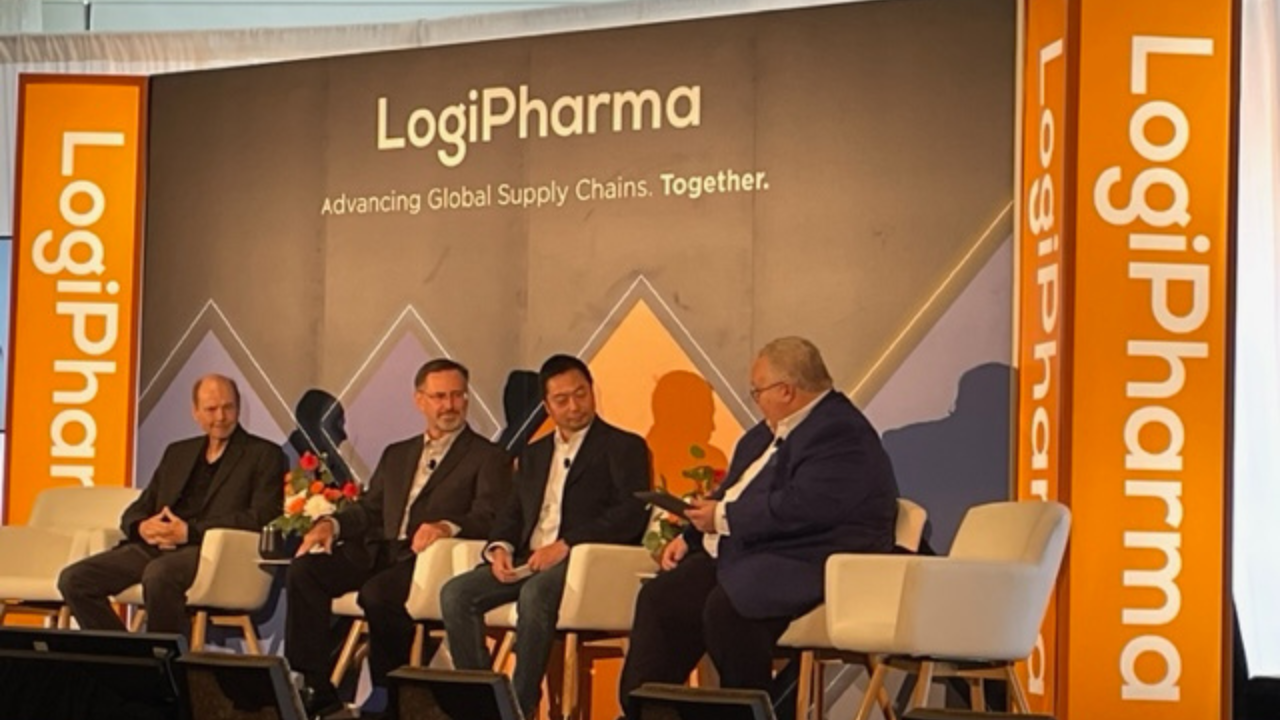LogiPharma USA 2023: Sea vs Air – Identifying Ways to Make International Cold Shipping Efficient and Sustainable
Session offers insight on how to successfully implement cold chain transport.

On the final day of this year’s LogiPharma USA, a breakout session provided a conversation on choosing a method to ship medications, with leaders in manufacturing and distribution offering their opinions on the ups and downs of each method.
Titled "Identifying Ways to Make International Cold Chain Shipping Efficient and Sustainable," the group was led by pharmaceutical supply chain expert John Wirthlin and included Robert Squires, director, launch network strategies, biologics, AstraZeneca; Ed Ram, senior director, supply chain, Sagent Pharmaceuticals; and Hiroki Asai, associate director, warehouse and logistics, BioNtech.
The team launched into the chat by briefly introducing themselves and explaining what they do in the industry.
“I lead a global team called process control transportation, which is essentially a logistics center of excellence within our global supply chain organization. We’re focused on proactive risk mitigation, operational excellence, and compliance,” explained Squires. “Most recently, as we’re looking at our operational process performance and our sustainability efforts, we’re really looking at how we can better utilize ocean versus air with our cold chain products. At AstraZeneca, we ship about 65% of our cargo by ocean, and we are mitigating to rapidly move cold chain into the ocean as well.”
Wirthlin then directed the conversation towards container storage and the effectiveness of 40 feet against 20 feet.
“We ship all of our inbound in a temperature-controlled environment,” said Ram. “Temperature-controlled containers are definitely a minority of the containers out there. Ten years ago, we predominately used 20-foot containers. The beauty of these containers is that they contain 10 pallets, which our CMOs has ready to ship in bag sizes. Now they’re being phased out and replaced with 40-foot containers. So now, we want to make sure the container is at least 80% full before it goes out. As a result, we’ve had to introduce delays, but we’re very happy to have a good capacity utilization on our inbound containers.”
Squires also talked about steps AstraZenca is taking to fill containers.
“We’re currently taking two steps to fill containers. One of the things we’re doing to optimize our cold chain shipments is to ship products that have good stability in the 2-8°C range. With our coaching products, it fills the load and optimizes the costs of biologics. You’re not filling up a container or waiting several weeks to fill it up,” he stated.
Wirthlin then asked about project coordination and communication. “If you’re going to different countries, there’s a lot of different technologies available, but there also isn’t. What would that look like from a coordination perspective because it’s not just about pushing a button, right?”
“My take is that it had been coordinated culture plan through mapping out the process and understanding that the stakeholders are becoming very critical to that sense,” said Asai. “Making sure we identify all key stakeholders such as package engineers, product validation. What about your regulatory filings that have to be updated? “I think that for a well-coordinated project, a good project manager would be useful.”
At the end of the discussion, Wirthlin asked, “What is one thing you can start implementing when you get back to your homebase?”
“You can have the best plans laid out, but they will fail if you don’t have good change management. So, two words: change management,” said Asai.
“It’s about the connectivity and the knowledge exchange that we talk about. The data and analytics are continuing to evolve and a lot of people are talking about connecting that data,” said Squires. “If you think of a Venn diagram, most of the development has been in the solid part of those bubbles. As much as that connection is digital solutions, it’s also people. How do you blend people with a digital solution and make sure that all these pieces connect together so that it’s a collective knowledge?”
Is Compounding the Answer to the Semaglutide Shortage? Experts Weigh In
October 30th 2024In this Q&A, Scott Brunner, CEO, and Tenille Davis, Chief Advocacy Officer, of the Alliance for Pharmacy Compounding discuss the challenges faced by patients and healthcare providers due to drug shortages, particularly for semaglutide and other medications.